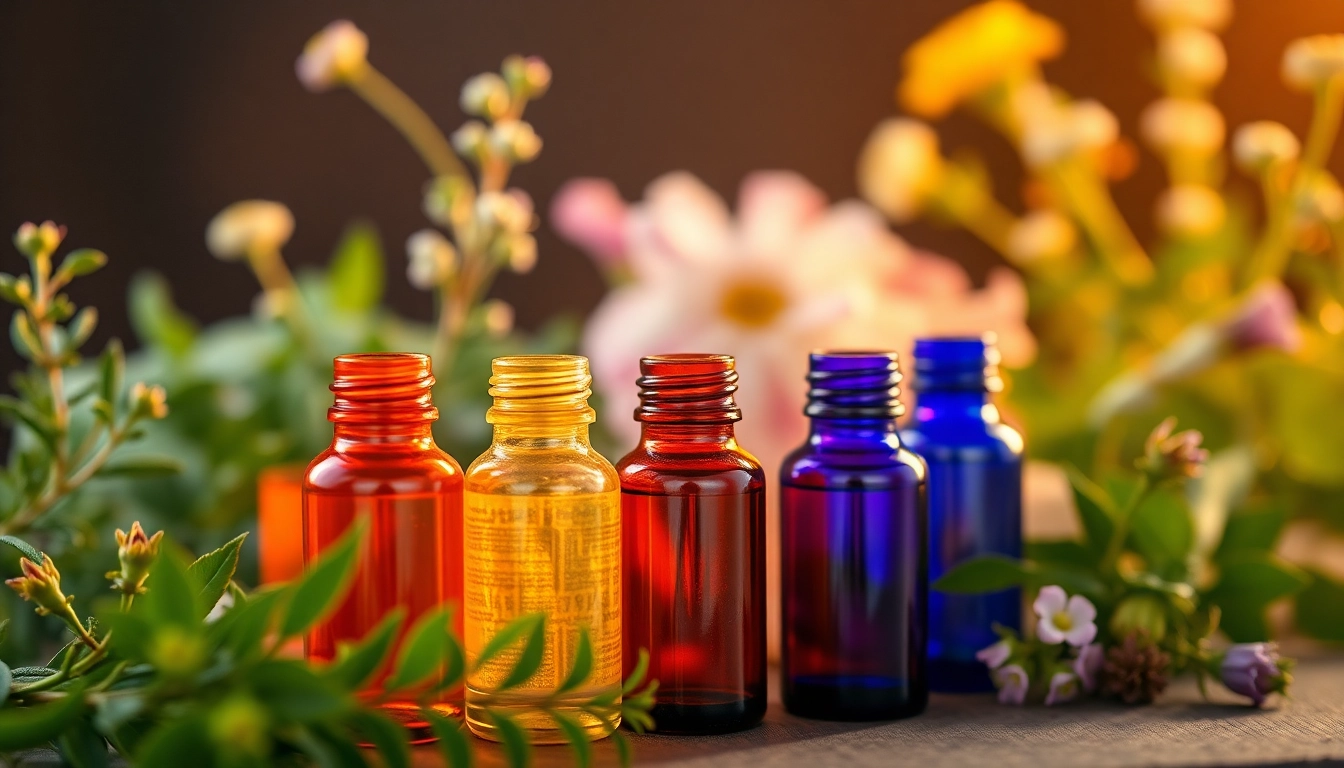Unveiling the Versatile Benefits and Uses of Essential Oil in Your Daily Routine
Understanding Essential Oil: What It Is and How It Works
Essential oils have gained tremendous popularity in recent years as holistic solutions for a myriad of health and wellness concerns. But what exactly are these potent plant extracts, and how do they function within our bodies? An essential oil is a concentrated hydrophobic liquid containing volatile aroma compounds from plants. They are often obtained through distillation or cold pressing and are widely used in aromatherapy, cosmetics, massage, and even in culinary practices. As we delve deeper into this topic, you will discover the varying types of essential oils, how they are extracted, and the science governing their efficacy. For those looking to explore these aromatic compounds further, essential oil products can be an excellent starting point.
The Science Behind Essential Oil
The science of essential oils is rooted in chemistry and biology. Each essential oil contains a wide array of chemical compounds which can evoke various physiological responses in the body. These compounds include terpenes, phenols, esters, and aldehydes, to name a few. They interact with our bodies through our olfactory system, which is intricately connected to the limbic system—the part of the brain that processes emotions and memories. This establishes a scientific basis for how scents can influence mood and behavior, laying the groundwork for practices like aromatherapy.
Different Types of Essential Oil and Their Properties
Essential oils are generally classified based on their plant origin and therapeutic qualities. Some of the most commonly used oils include:
- Lavender: Renowned for its calming properties, lavender oil is often used for relaxation and stress relief.
- Tea Tree: Known for its potent antibacterial properties, tea tree oil is commonly employed in skincare routines.
- Peppermint: This oil can invigorate the mind and body, promoting alertness and concentration.
- Eucalyptus: Frequently used for respiratory issues, eucalyptus oil can help clear the airways and promote easier breathing.
- Lemon: A bright, uplifting oil, lemon is often used to promote positivity and energy.
Each essential oil possesses unique characteristics and benefits, making it vital for users to match the oil to their desired outcome.
How Essential Oil is Extracted and Processed
The extraction of essential oils is a critical factor in determining their quality and effectiveness. Two predominant methods of extraction are distillation and cold pressing.
Distillation involves steam passing through plant material, causing essential oils to evaporate. These vapors are then cooled and condensed back into liquid form, separating the oil from water components. A popular method for aromatic plants like lavender and peppermint, this technique ensures that the powerful compounds of the plant remain intact.
Cold pressing is typically used for citrus oils. The outer rinds of fruit, like oranges and lemons, are mechanically pressed to release their fragrant oils, maintaining their fresh and vibrant scent as opposed to heat extraction methods.
Understanding these methods is essential for discerning quality and effectiveness, thus empowering consumers to make informed choices.
Benefits of Essential Oil in Everyday Life
Incorporating essential oils into daily routines can yield numerous benefits, ranging from enhanced emotional health to physical wellness. This section will explore how essential oils positively impact various facets of life.
Harnessing Aromatherapy Through Essential Oil
Aromatherapy utilizes essential oils for therapeutic benefit, employing their scents to promote emotional and physical health. By inhaling aromas or applying diluted oils onto the skin, users can activate their emotional and physiological responses. For instance, the soothing scent of chamomile can alleviate stress, while energizing oils like grapefruit can aid in productivity. Many people have found implementing aromatherapy in their home or workplace to be life-enhancing, transforming everyday environments into spheres of tranquil harmony.
Essential Oil for Stress Relief and Mental Clarity
Stress is an omnipresent obstacle in modern life, yet essential oils offer a natural approach to alleviate its effects. Oils such as bergamot, frankincense, and ylang-ylang can reduce anxiety levels and enhance mood. Moreover, certain oils like rosemary and peppermint can improve mental clarity and focus, making them excellent companions during studying or important work tasks. With simple inhalation techniques or topical application, individuals can foster a serene state of mind conducive to achieving their goals.
Common Health Uses of Essential Oil
Beyond emotional well-being, essential oils possess various health applications. They can support immune health, reduce inflammation, and even promote sleep.
For example, eucalyptus oil can provide relief from sinus congestion, while lavender oil is commonly utilized to promote a restful night’s sleep. The versatility of essential oils allows them to complement existing health rituals, providing natural assistance for everyday ailments.
Incorporating Essential Oil into Your Routine
Adding essential oils to your daily habits may seem daunting, but it can be seamlessly integrated with the right methods. This section will guide you through practical uses for essential oils.
How to Use Essential Oil in Diffusers
Diffusers are one of the most popular ways to harness the power of essential oils. They disperse the oils into the air, making it easy to inhale their aromatic benefits.
To use a diffuser, simply fill the tank with water, add a few drops of your selected essential oil, and turn it on. Depending on the type, you can set the diffuser to emit a continual stream or intermittent bursts of scent. Popular choices for stress relief include lavender or chamomile, while citrus oils, such as lemon and lime, are perfect for energizing your space.
DIY Recipes: Crafting Your Own Essential Oil Blends
Creating your own essential oil blends allows you to customize scents and their benefits to your liking. A simple recipe could combine:
- 3 drops of lavender oil (for relaxation)
- 2 drops of bergamot oil (to lift mood)
- 1 drop of chamomile oil (for additional calming effects)
Mixing the oils in a carrier oil, such as jojoba or coconut, can create a soothing topical application for pulse points. Experimenting with proportions and combinations is a fun way to discover your unique profiles and benefits.
Essential Oil Safety and Application Tips
While essential oils are natural, they are highly concentrated and, therefore, should be used with caution. Here are some safety guidelines:
- Always dilute essential oils with a carrier oil before applying them to the skin.
- Conduct a patch test to check for allergies or sensitivities.
- Avoid ingesting essential oils unless under the guidance of a trained professional.
- Keep essential oils away from sensitive areas, such as the eyes and mucous membranes.
By adhering to these precautions, users can enjoy the benefits of essential oils without adverse effects.
Choosing Quality Essential Oil Products
Not all essential oil products are created equal. This section delves into how to identify high-quality oils that offer the most therapeutic benefits.
What to Look for When Buying Essential Oil
When purchasing essential oils, transparency and purity are vital. Look for brands that provide comprehensive information on sourcing, testing, and extraction processes. Ideally, a reputable brand will offer batch-specific testing results, giving you insight into the oil’s composition. Always check for:
- A cultivar’s botanical name.
- Extraction method used.
- Country of origin.
- Presence of any additives or synthetic ingredients.
Understanding Labels: Pure vs. Blended Essential Oil
Understanding the difference between pure and blended essential oils can significantly affect your purchasing decisions. Pure essential oils are extracted from a single botanical source and contain no other ingredients. In contrast, blended essential oils may combine several different oils, or even include synthetic fragrances. Blended oils can be beneficial for specific applications but may dilute the desired effects of the pure oils. Being informed about these distinctions can help consumers make better choices based on their unique needs.
Reputable Brands and Sources for Essential Oil
With the surge in popularity of essential oils, numerous brands have emerged in the market. It is wise to seek out brands that are well-reviewed and have built a reputation for quality and integrity. Some reputable names in the industry include doTERRA, Young Living, and Plant Therapy. Such brands often partake in rigorous testing and often make their third-party lab reports accessible to consumers. Exploring local health food stores that specialize in natural products can also yield quality finds.
Future Trends in Essential Oil Usage
With the rising trend of wellness-focused lifestyles, the demand for essential oils continues to grow, leading to innovations in their applications and uses.
Innovative Applications of Essential Oil in Wellness
Essential oils are increasingly finding applications in wellness programs, integrating into yoga studios, spas, and even corporate wellness initiatives. Exciting developments include the use of essential oils in health monitoring systems and personal tech, such as diffusers that sync with your smartphone apps—tailoring the scent experience to your emotional state or physical conditions detected through wearable devices.
Sustainability Efforts in Essential Oil Production
Sustainable practices in essential oil production are gaining traction as more consumers prioritize environmental responsibility. Brands are beginning to adopt fair trade sourcing, ethical harvesting techniques, and transparency in their supply chains. The essential oil market is moving towards embracing sustainability, making an effort to minimize their ecological footprint while ensuring the longevity of plant species used. Understanding these trends helps environmentally conscious consumers support practices that are beneficial both for their health and the planet.
The Growing Market for Essential Oil Products
The global essential oil market is booming, with projected growth rates consistently upwards of 10% annually. This surge is attributed not only to consumer awareness but also to an expanding range of products, including personal care items, household cleaning supplies, and wellness supplements. With increased research supporting the benefits of essential oils, companies are innovating product solutions, creating opportunities for individuals to explore essential oils in various facets of daily living.








Post Comment